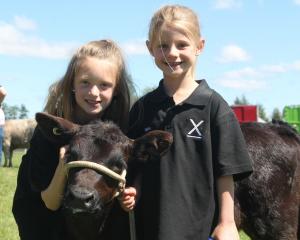
Sheep and beef farmers Simon and Kirstin Engelbrecht hosted more than 20 people on their about 500ha block in Goodwood, about 2km east of Palmerston, earlier this month.
The size of the Goodwood block had increased after leasing 140ha from Joy Clearwater, Mr Engelbrecht said.
The Engelbrecht family moved to their more than 600ha home block in Stoneburn, about 20km northwest of Palmerston, about 17 years ago.

The farm blocks were mostly run as separate entities.
Over both blocks there were about 5000 ewes, 1100 hoggets, 2400 works lambs and more than 500 cattle, Mr Engelbrecht said.
"It’s pretty busy running two farms mostly on my own."
They used to run breeding cows but a couple of dry years prompted a move to buying in bulls and steers depending on feed availability and the state of the meat schedule.
Both farms were well fertilised and had pasture renewal programmes in place.
"When we do grow grass it is reasonably good quality, so it is more suitable for fattening cattle than breeding cows."
Since buying cattle, the biggest lesson he had learnt was you get what you pay for.
He recalled once buying Charolais heifer calves at the Owaka Calf Sale in 2019.
"I beat myself up for buying them because they were huge and I paid about $1400 each for them — I thought ‘you dick’ for the next six months."
At the same sale, he also bought some "normal-size calves".
All the calves were sent to the works at the same time and he made $150 a head more out of the bigger calves.
"So I tend to buy the good ones because if they are bigger at the start, they’ll be bigger at the end."
The weather this autumn had been the best he had ever experienced since starting farming 35 years ago, when he leased a farm, aged 19.
The lambing date was August 20 in Goodwood and September 16 in Stoneburn.
Most of the ewes on the farm were under 4 years old because the young ones had "more go".
"It probably pulls our lambing percentage back a bit."
Between the two blocks, he had about 2300 lambs he could send to the works.
"They are killable but the schedule is going up and the feed is still growing."
If he sent the lambs away now, he would have a surplus of winter feed.
"If I don’t eat it with the lambs, I don’t know what I’d eat it with — so we are trying to make every post a winner."
As costs for farmers continued to rise, you needed to, he said.













